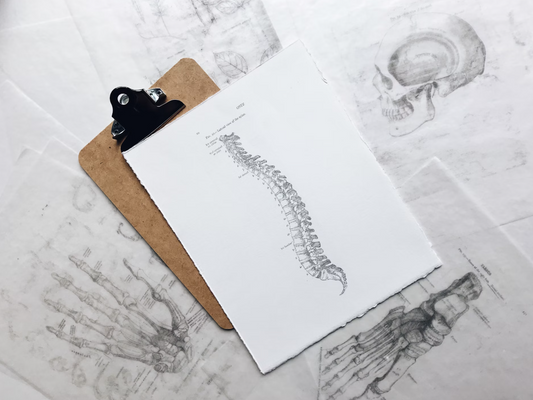Why do we Breathe?
Breathing is a fundamental biological process that sustains life. It is the way our body acquires oxygen from the atmosphere, which is critical for cellular respiration and energy production. The act of breathing is so instinctual that we often take it for granted. Yet, understanding why we breathe encompasses a variety of perspectives—from biological processes to psychological impacts. In this article, we will explore the multifaceted nature of breathing.
Understanding the Basics of Breathing
To comprehend the intricacies of breathing, we must first understand its basic mechanisms. Breathing is primarily a physical exchange of gases—oxygen and carbon dioxide—between our lungs and the environment. This process is essential not only for providing the fuel our bodies need but also for expelling waste gases produced during metabolism. The act of breathing is so fundamental that it often goes unnoticed, yet it is a vital component of our survival, influencing everything from our energy levels to our emotional state.

The Role of Oxygen in the Body
Oxygen plays a crucial role in cellular functions. Every cell in our body requires oxygen to convert glucose into energy through a biochemical process known as aerobic respiration. Without a sufficient supply of oxygen, our cells and organs cannot function optimally, leading to fatigue, dysfunction, and ultimately, severe health complications. Oxygen also aids in the maintenance of our body's pH balance, ensuring that our internal environment remains stable and conducive to life. Furthermore, oxygen is essential for the synthesis of neurotransmitters, which are vital for communication within the nervous system, thus influencing our mood and cognitive functions.
The Process of Inhalation and Exhalation
Breathing is inherently rhythmic, comprising two main processes: inhalation and exhalation. During inhalation, the diaphragm and intercostal muscles contract, creating a negative pressure in the thoracic cavity. This pressure difference allows air to flow into the lungs. Conversely, during exhalation, these muscles relax, and the lungs recoil, pushing air out. This simple yet efficient system facilitates the continuous exchange of oxygen and carbon dioxide, crucial for maintaining life. Additionally, the rate and depth of breathing can be influenced by various factors, including physical activity, emotional states, and even altitude. For instance, during exercise, our breathing rate increases to meet the heightened demand for oxygen, while stress can lead to shallow, rapid breaths that may disrupt this delicate balance.
Moreover, the respiratory system is intricately linked to other bodily systems, such as the cardiovascular system. The oxygen we inhale is transported via the bloodstream to various tissues, while carbon dioxide, a byproduct of cellular respiration, is carried back to the lungs for exhalation. This interplay is vital for homeostasis, as it not only regulates the levels of oxygen and carbon dioxide in our blood but also helps maintain our overall metabolic processes. Understanding this connection highlights the importance of healthy breathing patterns and their impact on our overall well-being, underscoring the need for practices such as deep breathing exercises and mindfulness to enhance respiratory efficiency and promote relaxation.
The Biological Perspective of Breathing
From a biological standpoint, breathing is intricately tied to the respiratory system, a complex network designed not only for gas exchange but also for protecting the lungs from pathogens and irritants. Our understanding of breathing extends beyond the mechanics to the physiological adaptations that occur within the system. The body’s ability to regulate breathing rate and depth in response to various stimuli, such as exercise or altitude changes, showcases the remarkable adaptability of this system. This regulation is primarily controlled by the brainstem, which monitors carbon dioxide levels in the blood and adjusts breathing accordingly to maintain homeostasis.
The Respiratory System: An Overview
The respiratory system consists of several key components, including the nasal cavity, pharynx, larynx, trachea, bronchi, and lungs. Each part has a specific function: the nasal cavity filters, warms, and moistens air; the trachea serves as a passageway; and the lungs are the primary site for gas exchange. Special cells in the alveoli facilitate this process, allowing oxygen to enter the bloodstream while removing carbon dioxide. Additionally, the respiratory system is equipped with a defense mechanism, including mucus and cilia, which trap and expel foreign particles, thus playing a crucial role in preventing infections and maintaining lung health.
How Cells Utilize Oxygen
Once oxygen enters the bloodstream, it binds to hemoglobin in red blood cells and is transported to tissues across the body. Here, it enters the cells and engages in various biochemical pathways to produce energy. The most well-known process is the Krebs Cycle, which, alongside glycolysis and oxidative phosphorylation, efficiently converts fuel into usable energy while releasing carbon dioxide as a byproduct. This intricate dance of cellular respiration not only fuels our daily activities but also underscores the importance of oxygen in sustaining life. Furthermore, the efficiency of oxygen utilization can vary based on factors such as physical fitness, age, and even altitude, highlighting the dynamic nature of our respiratory and metabolic systems. In high-altitude environments, for instance, the body adapts by producing more red blood cells to enhance oxygen transport, illustrating the remarkable resilience and adaptability of human physiology.
The Psychological Aspects of Breathing
Breathing is not just a biological necessity; it also plays a pivotal role in our psychological well-being. The act of breathing is intimately connected to our emotional responses, stress levels, and mental health.

Breathing and Stress Management
Many stress-reduction techniques emphasize the importance of controlled breathing. Practices such as yoga, meditation, and deep-breathing exercises help mitigate stress responses by slowing heart rates and decreasing cortisol levels. This regulation occurs due to the autonomic nervous system's response to deliberate breath control, affirming that how we breathe can significantly impact our mental state. Additionally, studies have shown that incorporating breathwork into daily routines can enhance resilience against stressors, allowing individuals to navigate challenging situations with greater ease. By fostering a deeper connection to our breath, we can cultivate a sense of empowerment and agency over our emotional responses.
The Connection Between Breathing and Emotions
Emotions can directly influence breathing patterns. For instance, anxiety and fear often lead to rapid, shallow breaths, while calmness may lead to slower, more measured breathing. Furthermore, deliberate slow breathing can evoke a state of calm and relaxation, showcasing the bidirectional relationship between our mental states and breathing patterns. This interplay is not merely anecdotal; research indicates that specific breathing techniques can activate the parasympathetic nervous system, which promotes a state of rest and recovery. Moreover, the practice of mindful breathing encourages individuals to become more attuned to their emotional landscape, enabling them to recognize and process feelings as they arise, rather than suppressing them. This awareness can lead to healthier emotional regulation and a more profound understanding of oneself.
Breathing and Physical Health
The significance of breathing extends into the realm of physical health. Proper oxygenation is vital for maintaining overall health, while breathing disorders can have far-reaching implications.

The Impact of Breathing on Cardiovascular Health
Efficient breathing directly affects cardiovascular health. When we breathe in a controlled manner, we enhance oxygen delivery to the heart, which is essential for its function. Additionally, proper breathing can lower blood pressure and reduce heart rates, contributing to better heart health over time. Techniques such as diaphragmatic breathing and paced breathing can further optimize this process, allowing individuals to tap into their body's natural ability to regulate stress and maintain a healthy heart rhythm. Regular practice of these techniques can lead to improved endurance and overall physical performance, making them invaluable for athletes and fitness enthusiasts alike.
Breathing Disorders and Their Implications
Breathing disorders, such as asthma, chronic obstructive pulmonary disease (COPD), and sleep apnea, can severely impact quality of life. These conditions not only hinder normal breathing but can also lead to complications in other systems, including the cardiovascular and nervous systems. For instance, individuals with untreated sleep apnea may experience increased risks of hypertension and heart disease due to intermittent oxygen deprivation during sleep. Effective management and treatment of breathing disorders are crucial for maintaining overall health and preventing associated complications. This can include lifestyle changes, medication, and in some cases, the use of devices such as CPAP machines to ensure a steady flow of air during sleep. Moreover, understanding the triggers of these disorders, whether they be environmental allergens or stress-related factors, can empower individuals to take proactive steps in managing their health.
The Future of Breathing Research
As our understanding of breathing evolves, so does research into new methods and treatments that can improve respiratory health and overall well-being. Innovations in respiratory medicine promise to deliver exciting advancements.
Innovations in Respiratory Medicine
Recent advancements in respiratory therapy include biologics and personalized medicine, which aim to target specific pathways in diseases like asthma and COPD. These novel treatments help to reduce inflammation and improve lung function, fostering better management of chronic conditions. Moreover, technology like portable spirometers and wearable devices now allows for real-time monitoring of lung health.
The Potential of Breathing Exercises in Health and Wellness
Breathing exercises have gained popularity as complementary therapies for enhancing both mental and physical health. Techniques such as diaphragmatic breathing, pursed-lip breathing, and box breathing are being integrated into wellness routines, alleviating symptoms of stress while promoting better lung function. This trend underscores the growing recognition of breath as not just a biological necessity but also a profound tool for personal health management.
In conclusion, breathing is a complex, multi-dimensional process encompassing biological, psychological, and health-related aspects. Through understanding why we breathe and how it affects our overall well-being, we can harness the power of breath to enhance our quality of life.




